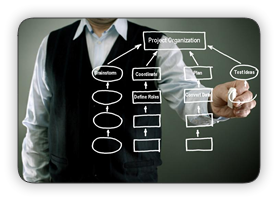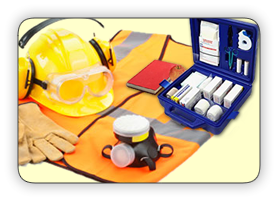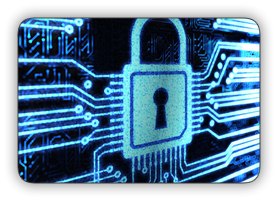| |
 |
| |
 |
ISO
9001 |
 |
| |
| ISO
9001 provides a generic yet comprehensive structure
on which organisations can establish processes
to help achieve business objectives. It has received
widespread global recognition across the globe.
ISO 9001 compliant business management systems
have been adopted across all industry types, from
manufacturing to service organisations. This level
of acceptance is a reflection of the flexibility
and proven practical value it offers to a wide
variety of businesses.
|
 |
|
 |
 |
ISO
14000 |
 |
 |
| Environmental
sustainability is one of the most significant
global challenges. Organisations are increasingly
required to demonstrate proactive management of
the environmental impacts of their business operations.
An Environmental Management System is a framework,
which can be integrated with existing business
processes to effectively identify, measure, manage
and control risks and environmental impacts. An
Environmental Management System also establishes
the means for improving performance and moving
towards environmental sustainability through systemized
approach in accordance with ISO14001.
|
 |
|
 |
 |
ISO
45001 |
 |
| |
Effective
management of Occupational Health and Safety (OHS)
risks is a basic requirement in every workplace.
The implementation of an OHS Management System
demonstrates to regulators, competitors and customers
a commitment to OHS management practices.
An Occupational Health & Safety Management
System is a methodology of conducting business
in a manner that reduces risks to your employees.
An effective OHS Management System, based on ISO
45001 may reduce potential financial and safety
risks.
|
 |
|
 |
 |
ISO
22000 |
 |
| |
| ISO
22000 takes a whole chain approach to food safety,
providing a standard that is not just for food
processors, but goes all the way from the farm
to the fork including packaging and ingredient
suppliers, caterers, storage & distribution
facilities, chemical and machinery manufacturers
and can be applied to primary producers such as
farms.
The ISO 22000 scheme is designed to ensure safe
food supply chains worldwide.
ISO 22000 is designed to allow all types of organization
with in the food chain to implement a food safety
management system (FSMS).
|
 |
|
 |
 |
ISO
27000 |
 |
| |
The
ISO 27001 standard was published in October 2005,
essentially replacing the old BS7799-2 standard.
It is the specificatino for an ISMS, an Information
Security Management System.
The objective of the standard is to "provide a
model for establishing, implementing, operating,
monitoring, reviewing, maintaining, and improving
an Information Security Management System". Regarding
its adoption, this should be a strategic decision.
Further, "The design and implementation of an
organization's ISMS is influenced by their needs
and objectives, security requirements, the process
employed and the size and structure of the organization".
|
 |
|
 |
 |
SA
8000 |
 |
| |
SA 8000
is one of the most internationally recognised
benchmark for the ethical management of human
resources. SA 8000 is an auditable standard for
a third party verification system, setting out
the requirements to be met by employers in the
work place, including worker’s rights, workplace
conditions and management systems.
Effective implementatino of SA 8000 leads to demonstrated
commitment to socially responsible business ethics,
enhanced reputation as a responsible corporate
citizen and customer confidence.
|
 |
|
| |
|
| |
|
|
|